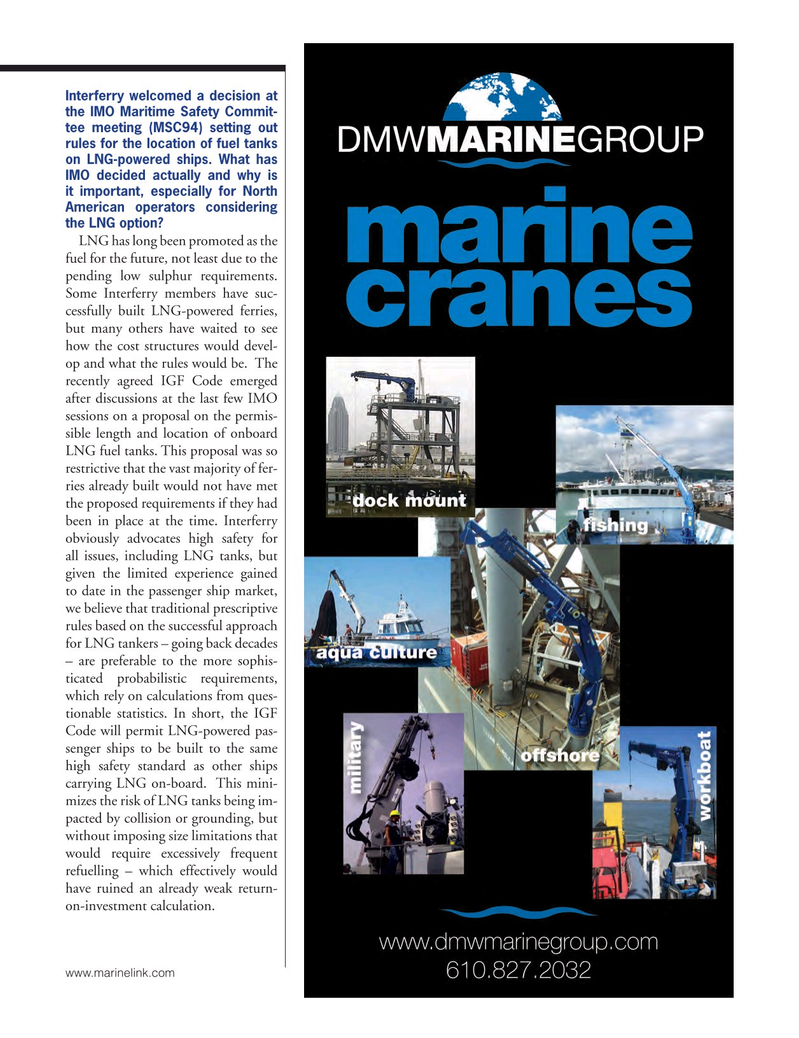
Page 17: of Marine News Magazine (January 2015)
Passenger Vessels & Ferries
Read this page in Pdf, Flash or Html5 edition of January 2015 Marine News Magazine
Interferry welcomed a decision at the IMO Maritime Safety Commit- tee meeting (MSC94) setting out rules for the location of fuel tanks on LNG-powered ships. What has
IMO decided actually and why is it important, especially for North
American operators considering the LNG option?
LNG has long been promoted as the fuel for the future, not least due to the pending low sulphur requirements.
Some Interferry members have suc- cessfully built LNG-powered ferries, but many others have waited to see how the cost structures would devel- op and what the rules would be. The recently agreed IGF Code emerged after discussions at the last few IMO sessions on a proposal on the permis- sible length and location of onboard
LNG fuel tanks. This proposal was so restrictive that the vast majority of fer- ries already built would not have met the proposed requirements if they had been in place at the time. Interferry obviously advocates high safety for all issues, including LNG tanks, but given the limited experience gained to date in the passenger ship market, we believe that traditional prescriptive rules based on the successful approach for LNG tankers – going back decades – are preferable to the more sophis- ticated probabilistic requirements, which rely on calculations from ques- tionable statistics. In short, the IGF
Code will permit LNG-powered pas- senger ships to be built to the same high safety standard as other ships carrying LNG on-board. This mini- mizes the risk of LNG tanks being im- pacted by collision or grounding, but without imposing size limitations that would require excessively frequent refuelling – which effectively would have ruined an already weak return- on-investment calculation.
www.marinelink.com
MN Jan15 Layout 1-17.indd 17 MN Jan15 Layout 1-17.indd 17 12/22/2014 10:37:55 AM12/22/2014 10:37:55 AM

 16
16

 18
18
